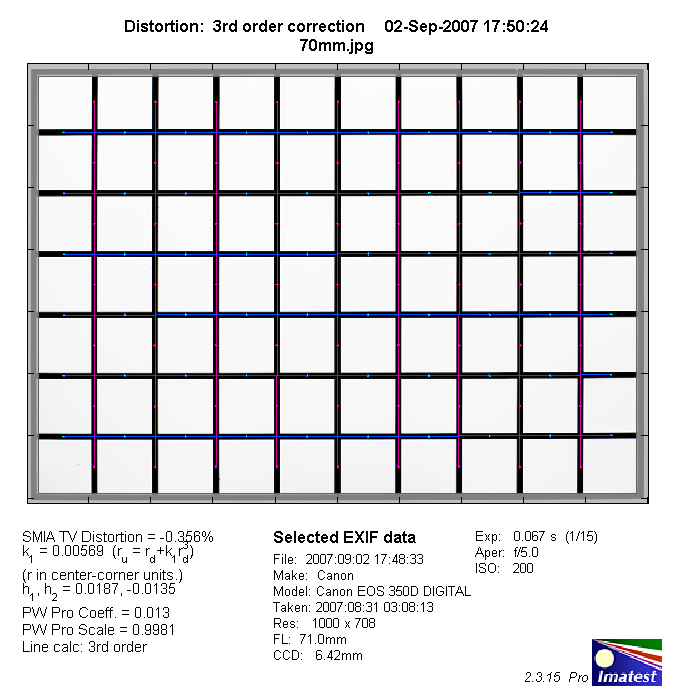|
Zeiss Vario-Sonnar T* 70-300mm f/4-5.6 (Contax N to Canon EF) - Review / Test Report - Analysis |
|
Lens Reviews -
Canon EOS (APS-C)
|
|
Page 2 of 3
Distortion
The level of distortion is very low throughout the zoom range and not field-relevant.
|
Move the mouse cursor over the focal length text marks below to observe the respective distortion
|
| 70mm |
200mm |
300mm |
|

|
The chart above has a real-world size of about 120x80cm.
Vignetting
The Zeiss is a full format lens and it shows only a very low degree of vignetting (< 0.5EV)
at wide-open aperture (APS-C DSLR). This is usually negligible under field conditions.

MTF (resolution)
The MTF characteristic of the Zeiss lens is a bit of a mixed bag. At 70mm the
resolution is on a very high level but the quality decreases continuously
towards longer focal lengths. At 200mm the resolution is still very good
but there're a more pronounced drop at 300mm @ f/5.6 specifically at the image
borders (rather soft). At f/8 and f/11 the quality recovers to very good levels across
the frame.
Please note that the MTF results are not directly comparable across the different systems!
Below is a simplified summary of the formal findings. The chart shows line widths per picture height (LW/PH) which can be taken as a measure for sharpness.
If you want to know more about the MTF50 figures you may check out the corresponding Imatest Explanations
Chromatic Aberrations (CAs)
Chromatic aberrations (color shadows at harsh contrast transitions) are
generally moderate with an average CA pixel width between 0.3-1px at
the image borders. The tested sample showed a slightly uneven CA
distribution.

|